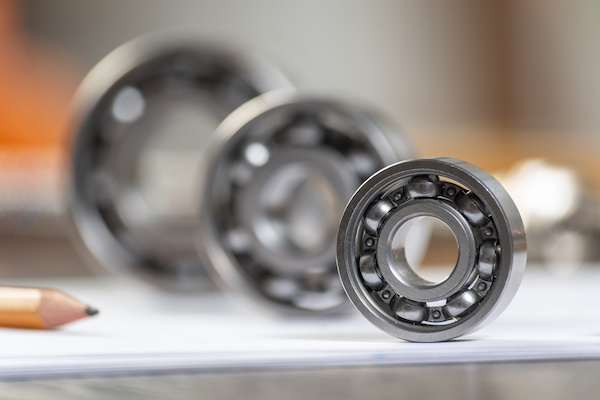Posted on 7/16/2021

Wheel bearings are a necessary piece for the hub, tire, and wheel assemblies to work harmoniously. These little things allow for friction-free rotation and movement of the hub assembly, which is a component of your car's steering system. A wheel bearing is a set of round, metal pieces known as ball bearings held together by a ring. Each wheel has its own set of wheel bearings, so your vehicle should have four sets. Your wheel bearings have a heavy influence on how smooth your vehicle rides. It would be highly hazardous to drive with worn-out wheel bearings, as it may cause your wheels to stop turning abruptly. How Long Do Wheel Bearings Last? You should replace wheel bearings every 85,000-100,000 miles; however, this is only an estimate, as it also depends on the quality of the bearings and usage. Unless both bearings on either side of the car are worn, there is no need to replace them all simultaneously. Instead, you should only replace the worn ones. Symptoms o ... read more
Posted on 6/28/2021

Most drivers depend on their senses or warning lights on their dashboards to recognize when their vehicle is due for a service. However, some car parts, such as shocks and struts, have no explicit warnings. The suspension system, which includes your shocks and struts, is highly complex. You would have to depend on experience and research to know when your shocks and struts are worn out. What are Shocks & Struts? All vehicles come outfitted with shocks, struts, or both. Shocks, or shock absorbers, are the parts that regulate the springs. They are accountable for making sure your vehicle doesn't bounce excessively on bumpy surfaces such as speed bumps. They convert kinetic energy absorbed from the road into thermal energy, which minimizes shock. Struts serve a similar purpose and support the weight of your vehicle and contribute to the alignment. Both are affixed to your suspension system and are a necessary part of your vehicle's steering, handling, comfortability ... read more
Posted on 5/26/2021

Your vehicle's dashboard can give you a lot of information about whether the components of your vehicle are functioning correctly. It can also tell you when you need maintenance. There are some warnings on your dashboard that shouldn't be ignored though, including the: Electrical system fault warning light Tire pressure warning light Oil pressure warning light Coolant temperature warning light Check engine warning light Electrical Fault Light The electrical fault light looks like a car battery and is one of the most important warning lights on your dashboard. When on, it indicates that there is a problem somewhere in the electrical system of your vehicle and this means the battery won't be able to function properly. What to Do While ignoring it might not cause major damage to your vehicle, it is possible that your car won't be able to start again until it's fixed so it's important to take your vehicle in for maintenance while it is still operational. Ti ... read more
Posted on 4/26/2021
.jpeg)
April is one of the two months that the Car Care Council supports every year to sensitize people on the importance of preventative maintenance and car care. The other month is October. The reason why it is crucial to give attention to your car during April is that it is the end of winter and you need to prepare your vehicle for the forthcoming summer road trips and spring driving. This is the time to deal with the issues that had taken the back seat during winter and ensure that windshield wipers, brakes, and tires are ready for the rain. Car care is paramount because without it, you will end up spending a lot of money paying for costly repairs down the line and you will resell it for a lower price. Taking care of your car will ensure that you are safe on the road and that your car is dependable, hence, lower chances of breaking down or accidents. Some of the things you should do to ensure that your car is in top shape during the oncoming warmer months are; Fluids, filters, a ... read more
Posted on 3/17/2021
.jpeg)
Too much heat presents a great challenge to motor vehicles. Thankfully, all vehicles have a measure to keep themselves cool. The car's engine has a cooling system aided by a coolant, a fluid that runs in the engine and transmits heat away from it. The coolant should remain clean for it to function effectively. Dirty coolant must be flushed out and replaced with a fresh one. But how do you know when your coolant needs flushing? To know this, be on the lookout for the following symptoms. Your Vehicle Overheats As stated above, the role of the coolant is to keep your engine temperatures low. If your temperature gauge is always on the higher side, it means the coolant is no longer performing its duty and needs flushing. An overheating engine can easily break down, resulting in costly repairs. A Maple Syrup Smell From Your Car (Engine) One sure sign that your coolant needs flushing is the smell of maple syrup, butterscotch, or pancakes coming from your engine. The ethylene glycol ... read more